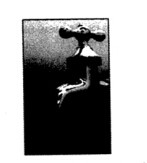显示生词 Tip: 色块区域是你划选过的生词,查询次数越多,颜色越深哦~ 显示重点词 Tip: 加粗单词为本章重点词哦!

14A The history of human civilisation is entwined with the history of the ways we have learned to manipulate water resources. As towns gradually expanded, water was brought from increasingly remote sources, leading to sophisticated engineering efforts such as dams and aqueducts. At the height of the Roman Empire, nine major systems, with an innovative layout of pipes and well-built sewers, supplied the occupants of Rome with as much water per person as is provided in many parts of the industrial world today.
B During the industrial revolution and population explosion of the 19th and 20th centuries, the demand for water rose dramatically. Unprecedented construction of tens of thousands of monumental engineering projects designed to control floods, protect clean water supplies, and provide water for irrigation and hydropower brought great benefits to hundreds of millions of people. Food production has kept pace with soaring populations mainly because of the expansion of artificial irrigation systems that make possible the growth of 40 % of the world's food. Nearly one fifth of all the electricity generated worldwide is produced by turbines spun by the power of falling water.
15C Yet there is a dark side to this picture: despite our progress, half of the world's population still suffers, with water services inferior to those available to the ancient Greeks and Romans. As the United Nations report on access to water reiterated in November 2001, more than one billion people lack access to clean drinking water; some two and a half billion do not have adequate sanitation services. Preventable water-related diseases kill an estimated 10,000 to 20,000 children every day, and the latest evidence suggests that we are falling behind in efforts to solve these problems.
16D The consequences of our water policies extend beyond jeopardising human health. Tens of millions of people have been forced to move from their homes - often with little warning or compensation - to make way for the reservoirs behind dams. More than 20% of all fresh water fish species are now threatened or endangered because dams and water withdrawals have destroyed the free-flowing river ecosystems where they thrive. Certain irrigation practices degrade soil quality and reduce agricultural productivity. Groundwater aquifers*are being pumped down faster than they are naturally replenished in parts of India, China, the USA and elsewhere. And disputes over shared water resources have led to violence and continue to raise local, national and even international tensions.
17E At the outset of the new millennium, however, the way resource planners think about water is beginning to change. The focus is slowly shifting back to the provision of basic human and environmental needs as top priority -ensuring 'some for all, 'instead of 'more for some'. Some water experts are now demanding that existing infrastructure be used in smarter ways rather than building new facilities, which is increasingly considered the option of last, not first, resort. This shift in philosophy has not been universally accepted, and it comes with strong opposition from some established water organisations. Nevertheless, it may be the only way to address successfully the pressing problems of providing everyone with clean water to drink, adequate water to grow food and a life free from preventable water-related illness.
18F Fortunately -and unexpectedly - the demand for water is not rising as rapidly as some predicted. As a result, the pressure to build new water infrastructures has diminished over the past two decades. Although population, industrial output and economic productivity have continued to soar in developed nations, the rate at which people withdraw water from aquifers, rivers and lakes has slowed. And in a few parts of the world, demand has actually fallen.
19G What explains this remarkable turn of events? Two factors: people have figured out how to use water more efficiently, and communities are rethinking their priorities for water use. Throughout the first three-quarters of the 20th century, the quantity of freshwater consumed per person doubled on average; in the USA, water withdrawals increased tenfold while the population quadrupled. But since 1980, the amount of water consumed per person has actually decreased, thanks to a range of new technologies that help to conserve water in homes and industry In 1965, for instance, Japan used approximately 13 million gallons* of water to produce $1 million of commercial output; by 1989 this had dropped to 3.5 million gallons (even accounting for inflation) - almost a quadrupling of water productivity. In the USA, water withdrawals have fallen by more than 20 % from their peak in 1980.
* 1 gallon: 4.546 litres
20H On the other hand, dams, aqueducts and other kinds of infrastructure will still have to be built, particularly in developing countries where basic human needs have not been met. But such projects must be built to higher specifications and with more accountability to local people and their environment than in the past. And even in regions where new projects seem warranted, we must find ways to meet demands with fewer resources, respecting ecological criteria and to a smaller budget.
Reading Passage 2 has seven paragraphs, A-H.
Choose the correct heading for paragraphs A and B-H from the list of headings below.
Drag the correct number, Ⅰ-Ⅺ, into boxes 14-20 on your answer sheet.
Do the following statements agree with the claims of the writer in Reading Passage 2?
In boxes 21-26 on your answer sheet, write
TRUE if the statement agrees with the information
FALSE if the statement contradicts the information
NOT GIVEN if there is no information on this in the passage
21.Water use per person is higher in the industrial world than it was in Ancient Rome.
22.Feeding increasing populations is possible due primarily to improved irrigation systems.
23.Modern water systems imitate those of the ancient Greeks and Romans.
24.Industrial growth is increasing the overall demand for water.
25.Modern technologies have led to a reduction in domestic water consumption.
26.In the future, governments should maintain ownership of water infrastructures.